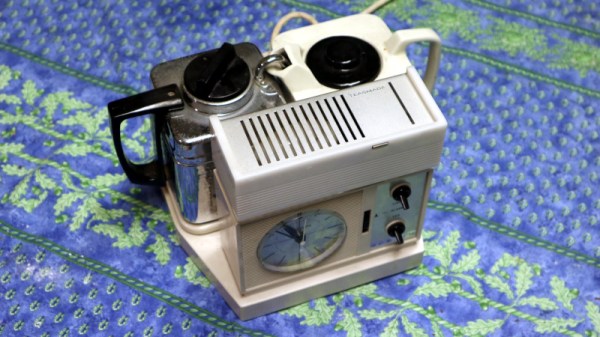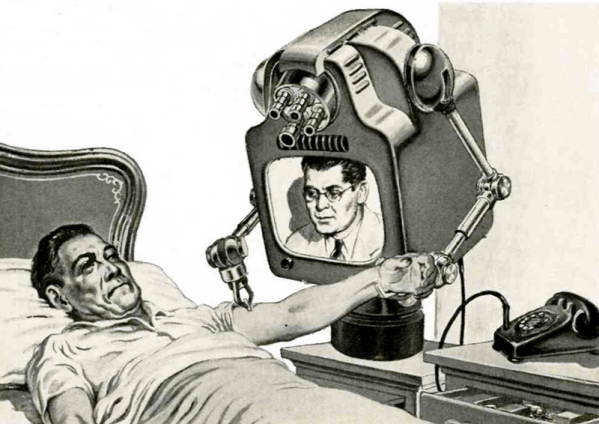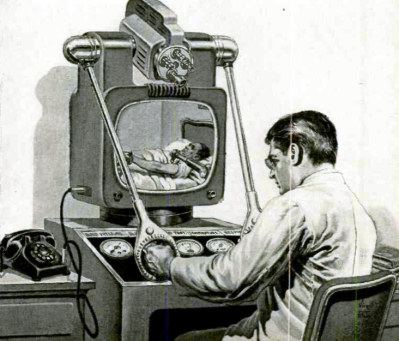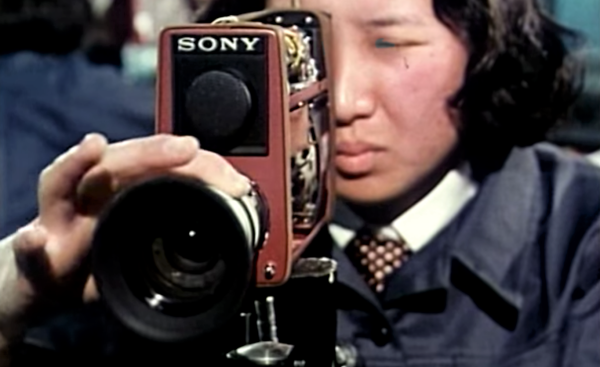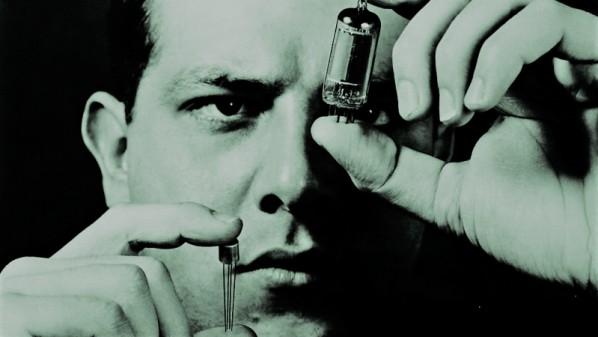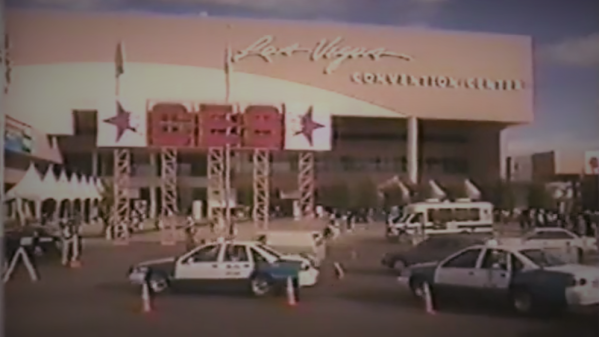We’re used to our domestic appliances being completely automated in 2020, but not so long ago they were much simpler affairs. Not everything required a human to run it though, an unexpected piece of electromechanical automation could be found in British bedrooms. This is the story of the Goblin Teasmade, an alarm clock with a little bit extra.
retrotechtacular131 Articles
Retrotechtacular: Predictions That Just Missed It
Few occupations are more fraught with peril than predicting the future. If you are a science fiction author, it might not matter, but if you are trying to design the next game-changing piece of hardware, the stakes are higher.
It seems like, for the most part, even if you manage to get some of the ideas right, the form is often way off. Case in point: telemedicine. Today you can visit a doctor using video conferencing with your phone or a PC for many common maladies. A new idea? Not really. Hugo Gernsback wrote about it in Radio Electronics back in 1955.
Gernsback wrote:
The average medical doctor today is overworked and short-lived. There are never enough doctors anywhere for the world’s constantly multiplying population. Many patients die because the doctor cannot reach them in time, particularly at night and in remote regions.
…[H]e can only see a few [patients] during the day. With increasing traffic congestion, many doctors refuse to make personal calls — execept in emergencies. Even then they arrive often too late. Much of this dilemma will be archaic in the near future, thanks to the Teledoctor.
Gernsback envisioned a doctor using what we now call Waldos similar to what people use to manipulate radioactive material. These super mechanical hands (Gernsback’s words) would allow the doctor to write a prescription, pour liquids, or even diaper a baby thanks to a sense of touch built into them.
Oddly enough, Gernsback’s vision included renting a teledoctor from the drugstore for $3.50 a day. This way, the doctor could call on you and then follow up as well. The drug store would deliver the machine and it would — get this — connect to your phone:
A cord with the a telephone plug attached to the teledoctor instrument is now plugged into a special jack on your telephone. Future telephones will be provided with this facility. The TV signals and telehand electronic signals, etc., will all travel over the closed circuit telephone lines.
In a footnote, Gernsback notes that you can’t send a 525-line TV signal on current phone lines, but a 250-350 line picture was possible and that would be sufficient.
Visionary? In some ways, maybe. The basic idea is coming true today, although it isn’t likely doctors will do surgery or inject you remotely in your home anytime soon. The special telephone plug sort of came true and is already obsolete. The images, by the way, are the ones that accompanied the original article in Radio Electronics.
Continue reading “Retrotechtacular: Predictions That Just Missed It”
Retrotechtacular: This Boat Isn’t Sinking… It’s Doing Research
It looks like a ship when it is in port or in transit, and when it use you’d think it’s about to sink. The RP FLIP (for “FLoating Instrument Platform) is an unpowered research buoy with a very special design designed to provide the most stable and vibration-free platform possible for scientists studying the properties of the sea.
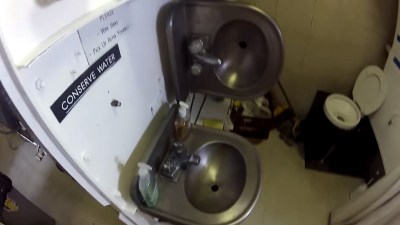
Scientific research often places demanding requirements upon existing infrastructure, requiring its own large projects tailored to their individual task. From these unusual needs sometimes come the most curious buildings and machinery. RP FLIP is designed to provide the most stable and vibration-free platform possible for scientists studying the properties of the sea. By flooding tanks in its bow it transfers from horizontal and floating on the surface to vertical and half-submerged when it is deployed. With its stern protruding from the water and pointing skywards it has the appearance of a sinking ship. What’s really neat is that its interior is cleverly designed such that its crew can operate it in either horizontal or vertical positions.
The original impetus for FLIP’s building was the US Navy’s requirement to understand the properties of sound waves in the ocean with relation to their submarines and presumably also those of their Soviet adversaries. Research submarines of the 1950s were not stable enough for reliable measurements, and the FLIP, launched in 1962, was built to address this by providing a far more stable method of placing a hydrophone at depth. Since then it has participated in a significant number of other oceanographic studies as diverse as studying the propagation of waves across the Pacific, and the depth to which whales dive.
The videos below should give a good introduction to the craft. The first one is a glossy promotional video from its operator, the Scripps Institution Of Oceanography, on its 50th anniversary, while the lower of the two is a walkaround by a scientist stationed aboard. In this we see some of the features for operating in either orientation, such as a toilet facilities mounted at 90 degrees to each other.
It appears that FLIP is in good order and with continuing demand for its services that should see it still operating well into the future. Those of us who live near Atlantic waters may never see it in person but it remains one of the most unusual and technically intriguing vessels afloat.
FLIP is not the only 1960s oceanographic research buoy we’ve covered, should you have an interest in such things.
Continue reading “Retrotechtacular: This Boat Isn’t Sinking… It’s Doing Research”
Retrotechtacular: History Of Sony Mini Doc Bursts With 1970s Style
The 1970s, it was a time when cameras needed film, phones had cords, and televisions masqueraded as furniture. A time where hi-fi systems were judged by the volume knob feel, and thanks to YouTube user [nefesh22] we have a behind-the-scenes glimpse of what the era was like from the Sony corporate perspective in this mini documentary of the company’s history below. The film was originally created for internal use at Sony’s US manufacturing facilities in San Diego, however, now it now can be watched by anyone with an internet connection.
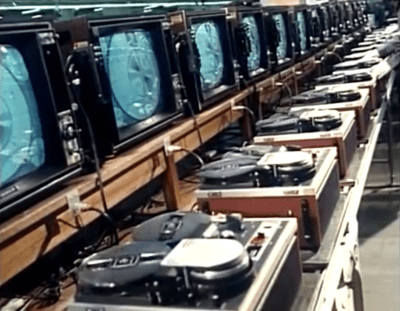
Sony’s corporate ethos of allowing its engineers to drive business innovation is on full display here. For instance how in 1950 Sony introduced the first magnetic tape recorder, the G-Type, in Japan and followed that up with the first portable television, the TV8-301, a decade later. Throughout the 1970s Sony became an innovator in the video space. In fact, the Sony Trinitron brand of color TVs garnered so much notoriety in the television industry that the company was awarded an Emmy in 1973. Though the most telling feature is the documentary’s focus on the 3/4-inch U-Matic videocassette format, a precursor to VHS and Sony’s own Betamax videotapes. Highlighting the “superiority” of those VTR systems of the day really does date the film as those hulking decks failed to penetrate the market beyond early adopters and media companies.
It’s interesting to see how hands-on quality assurance testing used to be. Whether it’s glancing at NPN transistors under a microscope, dialing in the focus on a Super 8 camera, or a quick wave of the degaussing wand before a tube leaves the line, each of the QA tasks were carried out by individual employees rather than the automated methods of today. On an unrelated note, the brief overview of the Sony’s on-site “fiefdom” for its young workforce is a reminder that some ideas may be better left in the past… Google’s Mountain View campus anyone? If anything is to be gleaned from this retrotechtacular retrospective is that we could all use a little more wood-grain in our electronics these days.
Continue reading “Retrotechtacular: History Of Sony Mini Doc Bursts With 1970s Style”
Retrotechtacular: How Not To Design With Transistors
Consider the plight of a mid-career or even freshly minted electrical engineer in 1960. He or she was perched precariously between two worlds – the proven, practical, and well-supported world of vacuum tube electronics, and the exciting, new but as yet unproven world of the transistor. The solid-state devices had only started making inroads into electronic products relatively recently, and mass production techniques were starting to drive the cost per unit down enough to start including them in your designs. But, your company has a long history with hot glass and no experience with flecks of silicon. What to do?
To answer that question, you might have turned to this helpful guide, “Tubes and Transistors: A Comparative Guide” (PDF link). The fancy booklet, with a great graphic design that our own [Joe Kim] would absolutely love, was the product of the Electron Tube Information Council, an apparently defunct group representing the interests of the vacuum tube manufacturers. Just reading the introduction of this propaganda piece reveals just how worried companies like RCA, General Electric, and Westinghouse must have been as the 1950s turned into the 1960s. The booklet was clearly aimed directly at engineers and sought to persuade them of the vacuum tube’s continued relevance and long-term viability. They helpfully explain that tubes are a reliable, proven technology that had powered decades of designs, and that innovations such as heaterless cathodes and miniaturization were just around the corner. Transistors, we’re told, suffer from “spread of characteristics” that correctly describes the state of materials engineering of silicon and germanium at the time, a thornier problem than dealing with glass and wires but that they had to know would be solved within a few years.
With cherry-picked facts and figures, the booklet makes what was probably in 1960 a persuasive case for sticking with tubes. But the Electron Tube Information Council was fighting a losing battle, and within a decade of swamping engineers with this book, the industry had largely shifted to the transistor. Careers were disrupted, jobs disappeared, and fortunes were lost, but the industry pressed forward as it always does. Still, it’s understandable why they tried so hard to stem the tide with a book like this. The whole PDF is worth a look, and we’d love to have a hard copy just for nostalgia’s sake.
Thanks to [David Gustafik] for the tip.
Low Tech High Safety And The NYC Subway System
 The year is 1894. You are designing a train system for a large city. Your boss informs you that the mayor’s office wants assurances that trains can’t have wrecks. The system will start small, but it is going to get big and complex over time with tracks crossing and switching. Remember, it is 1894, so computing and wireless tech are barely science fiction at this point. The answer — at least for the New York City subway system — is a clever system of signals and interlocks that make great use of the technology of the day. Bernard S. Greenberg does a great job of describing the system in great detail.
The year is 1894. You are designing a train system for a large city. Your boss informs you that the mayor’s office wants assurances that trains can’t have wrecks. The system will start small, but it is going to get big and complex over time with tracks crossing and switching. Remember, it is 1894, so computing and wireless tech are barely science fiction at this point. The answer — at least for the New York City subway system — is a clever system of signals and interlocks that make great use of the technology of the day. Bernard S. Greenberg does a great job of describing the system in great detail.
The subway began operation in 1904, well over 30 years since the above-ground trains began running. A clever system of signals and the tracks themselves worked together with some mechanical devices to make the subway very safe. Even if you tried to run two trains together, the safety systems would prevent it.
On the face of it, the system is very simple. There are lights that show red, yellow, and green. If you drive, you know what these mean. But what’s really interesting is the scheme used at the time to make them light.
Continue reading “Low Tech High Safety And The NYC Subway System”
Retrotechtacular: HGTV, The Place For Everything CES 1996
It’s January, and that means it’s time once again for the Consumer Electronics Show. CES is the place where electronic manufacturers from all across the globe to show off their future products and make promises they probably can’t keep. Of course there is no better indicator of a company’s future than looking at the past, and thanks to [Home & Garden Television] we have a comprehensive look at what CES was twenty three years ago. The cable channel aired a special, “Plugged In with Wil Shriner”, covering CES 1996 and it is certainly illuminating to see in hindsight. Plus it even comes complete with “cable money” tier mid 90s motion graphics.
Over on YouTube, user [videoholic] has uploaded the HGTV CES ’96 special into five separate segments (links provided below). Some of the highlights include:
- Canon introduces IR eye tracking (akin to the New 3DS) in their camcorder line
- Dual recording VCR from Sharp on one VHS tape provided you can fix the tracking with the remote.
- The term “I triple E 1394” may just have been said for the first (and last) time ever on cable television.
- A digital alarm clock from Oregon Scientific (called the Time Machine) that will tell you the weather.
- Magellan thought, “Who needs a cell phone when you can have a satellite phone for $8000”.
- Soundtube, the fashionable beer cozy for your gigantic speakers as seen on MTV Beach House.
- Noise Cancellation Technologies INC wanted to turn your cars headliner into a big ol’ speaker.
- Cyber Pong promised online multiplayer a full decade before Rockstar’s Table Tennis on Xbox 360.
- The Simpsons Cartoon Studio helps create fan fiction on multimedia CD-ROM.
- Compaq’s PC keyboard with an integrated fax machine.
- Norris Communication’s handheld voice recorder full of flash memory to offload to your PDA.
- Crestron’s idea of home automation involved a touchscreen to operate a light switch (some things never change).
- DVD players a year before the first ones would hit the United States.
- DVDs of an R-rated movie projected to also contain the G and PG-13 rated versions of the same movie.
- Sharp introduces the world’s largest LCD display (which is 28 inches).
Continue reading “Retrotechtacular: HGTV, The Place For Everything CES 1996”

